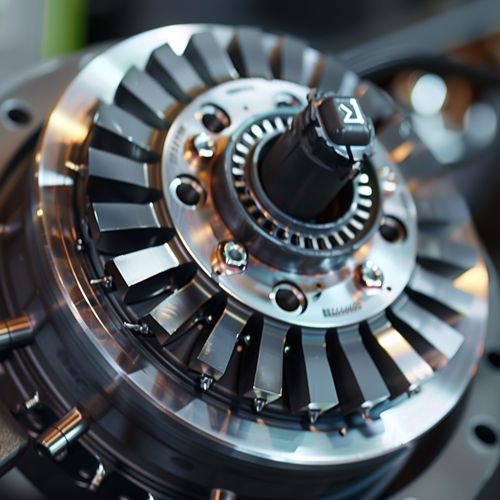Rotor
Introduction
A rotor is a rotating part of an electro-mechanical device. Its main function is to transfer energy, either mechanical or electrical, from one point to another within the system. Rotors are found in numerous devices including electric motors, generators, alternators, and various types of pumps, fans, and turbines. The design and construction of a rotor can vary greatly depending on its specific application.


Design and Construction
The design of a rotor is primarily determined by its intended function and the type of device it is part of. In general, a rotor consists of a shaft, which is a long, cylindrical metal bar, and a series of laminations or windings. The shaft is typically made of steel or another strong, durable material. The laminations or windings, which are often made of copper or aluminum, are wrapped around the shaft. The number, size, and arrangement of these windings can greatly affect the rotor's performance.
In an electric motor, for example, the rotor is designed to rotate when a current is passed through the windings, creating a magnetic field that interacts with the magnetic field of the stator, the stationary part of the motor. The interaction between these two magnetic fields causes the rotor to spin, converting electrical energy into mechanical energy.
In a generator or alternator, the rotor's function is essentially the opposite. Instead of converting electrical energy into mechanical energy, it converts mechanical energy into electrical energy. This is achieved by rotating the rotor within a magnetic field, which induces a current in the windings.
Types of Rotors
There are several different types of rotors, each with its own unique design and function. Some of the most common types include squirrel cage rotors, wound rotors, and salient pole rotors.
Squirrel Cage Rotors
Squirrel cage rotors are the most common type of rotor found in AC induction motors. They are named for their appearance, which resembles a hamster wheel or "squirrel cage". This type of rotor consists of a series of conductive bars, usually made of aluminum or copper, which are connected at both ends by shorting rings. The bars and rings form a "cage" around the rotor's shaft.
When a current is passed through the stator windings of the motor, a rotating magnetic field is created. This field induces a current in the conductive bars of the squirrel cage rotor, which in turn creates its own magnetic field. The interaction between these two fields causes the rotor to rotate.
Wound Rotors
Wound rotors are used in some types of AC induction motors, as well as in synchronous motors and generators. Unlike squirrel cage rotors, wound rotors consist of a series of windings that are connected to external circuits via slip rings and brushes. This allows for greater control over the motor's speed and torque, making wound rotors ideal for applications that require variable speed or high starting torque.
Salient Pole Rotors
Salient pole rotors are typically used in alternators and synchronous generators. They consist of a series of magnetic poles that protrude from the rotor's surface. These poles are wound with coils of wire, which generate a magnetic field when a current is passed through them. As the rotor spins, this magnetic field induces a current in the stator windings, generating electricity.
Applications
Rotors are used in a wide variety of applications, ranging from small household appliances to large industrial machinery. Some of the most common applications include electric motors, generators, alternators, pumps, fans, and turbines.
Electric Motors
In an electric motor, the rotor plays a crucial role in converting electrical energy into mechanical energy. The rotor's windings are energized by a current, which creates a magnetic field. This field interacts with the magnetic field of the stator, causing the rotor to rotate and drive the motor's output shaft.
Generators and Alternators
In a generator or alternator, the rotor's function is to convert mechanical energy into electrical energy. This is achieved by rotating the rotor within a magnetic field, which induces a current in the stator windings.
Pumps, Fans, and Turbines
In pumps, fans, and turbines, the rotor is used to transfer energy from a motor or engine to the fluid or air that the device is designed to move. The rotor's blades or impellers push against the fluid or air, causing it to move.
